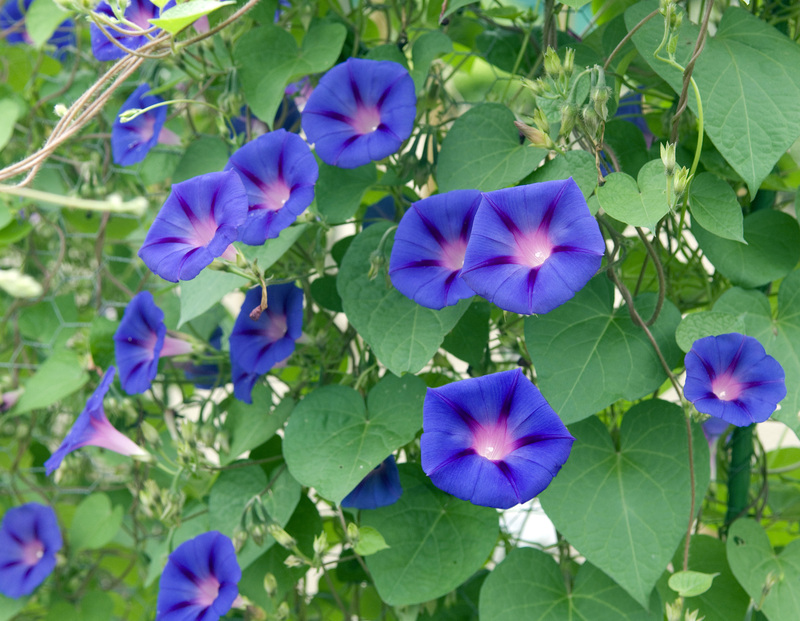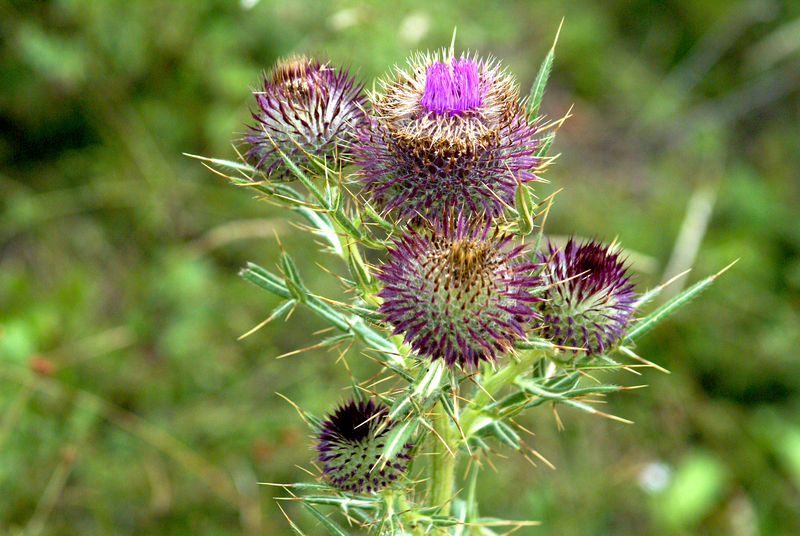From Organic Clutter to Soil Enrichment
Posted on 29/09/2025
From Organic Clutter to Soil Enrichment: Transforming Waste into Garden Gold
Our modern lives inevitably generate waste. Whether you tend a garden, live in the heart of a city, or run a bustling kitchen, organic clutter quickly accumulates. But what if this organic matter, often viewed as mere rubbish, could become the key to healthy, nutrient-dense soil? From organic clutter to soil enrichment, this guide explores how you can harness the natural cycles of decomposition to transform kitchen scraps, yard waste, and garden residues into valuable nourishment for your plants and landscape.

Understanding Organic Clutter
Organic clutter refers to biodegradable refuse produced from gardens, yards, and households--think wilted spinach, grass clippings, autumn leaves, and coffee grounds. Despite its apparent insignificance, this organic matter is teeming with potential. Rather than sending it to overflowing landfills, you can capitalize on its intrinsic value.
Sources of Organic Waste
- Food scraps: Vegetable peels, fruit cores, eggshells, coffee grounds.
- Yard debris: Fallen branches, dead leaves, trimmed grass, spent flowers.
- Paper products: Unbleached napkins, paper towels, cardboard pieces (ensure they are free from plastics and inks).
- Animal manures: From herbivores like cows, horses, and chickens (never use pet feces in edible gardens).
Organic debris might seem like a nuisance, but it carries the building blocks for robust soil structure and fertility.
Why Move From Waste to Rich Soil?
By allowing organic matter to decompose and incorporating it back into the soil, you complete nature's recycling loop. This process yields not just environmental benefits, but also significant improvements for your garden, homestead, or landscape.
Key Benefits of Soil Enrichment
- Boosts Soil Fertility: Decomposed organic matter--known as compost or humus--contains key nutrients (nitrogen, phosphorus, potassium).
- Improves Soil Structure: Enriched soil promotes aeration, moisture retention, and easier root penetration.
- Feeds Beneficial Microbes: Healthy soil ecosystems foster microbial life that assists plants in nutrient uptake and disease resilience.
- Reduces Landfill Waste: Recycling organics at home reduces methane emissions from landfill decomposition.
- Suppresses Plant Diseases: Well-enriched soil outcompetes certain pests and pathogens, supporting vigorous plant growth.
The Journey: How Organic Clutter Becomes Enriched Soil
Turning kitchen waste and yard refuse into fertile soil is both science and art. Let's walk through the steps that transform organic clutter into nutrient-rich compost.
Step 1: Collection and Sorting
Begin by collecting everyday organic matter. Use sturdy kitchen bins and outdoor receptacles. For optimal decomposition and quality enrichment:
- Separate meat, dairy, and fatty items (these attract pests when composted at home).
- Chop larger materials for quicker breakdown.
- Layer "greens" (nitrogen-rich) with "browns" (carbon-rich) to achieve balance.
Common greens: Vegetable peels, coffee grounds, grass clippings.
Common browns: Dry leaves, shredded cardboard, wood chips.
Step 2: Composting - The Heart of Soil Enrichment
Composting is a controlled, aerobic (oxygen-driven) process that leverages bacteria, fungi, and macro-organisms (like earthworms) to decompose organic matter. There are several methods for soil enrichment:
- Traditional hot composting: Piling organic matter and turning it regularly for heat-driven rapid decomposition.
- Cold composting: Less labor-intensive, but slower; simply stack and wait, turning infrequently.
- Vermicomposting: Uses red wiggler worms to break down food scraps into ultra-rich worm castings.
- Bokashi: Anaerobic (airless) method, suitable for kitchen scraps, produces a pre-compost that finishes in the garden.
Key tips for effective composting:
- Maintain a carbon-to-nitrogen (C:N) ratio around 30:1 for optimal microbial activity.
- Ensure adequate moisture (like a wrung-out sponge) but avoid waterlogging.
- Regularly aerate by turning or mixing the pile.
- Monitor for odors--foul smells indicate poor aeration or excess nitrogen.
Step 3: Curing and Maturation
Compost is ready when the material turns dark, crumbly, and earthy-smelling. Maturation is vital--unfinished compost can rob soil of nitrogen or harbor pathogens. Allow your batch to "cure" for several weeks to several months, depending on method and climate.
Step 4: Incorporation into Soil
Once fully decomposed, compost becomes your ultimate soil enrichment tool. Use it as:
- Top dressing for gardens, lawns, and trees.
- Soil amendment mixed into planting beds or containers.
- Mulch to suppress weeds and conserve moisture.
- Compost tea (liquid) to feed plants directly and inoculate soils.
Beyond Compost: Advanced Organic Soil Enrichment Techniques
While composting is the most familiar approach, other organic strategies supplement soil health:
Green Manures and Cover Crops
Planting crops such as clover, vetch, or rye in off-seasons can capture nutrients, fix nitrogen, and add biomass when tilled in. These "living mulches" shield soils from erosion and increase organic content.
Sheet Mulching (Lasagna Gardening)
Layering newspapers, cardboard, green waste, and compost directly atop existing soil smothers weeds and gradually decomposes for in-place enrichment.
Chop-and-Drop Mulching
Prune garden plants and drop the clippings in place--nature's effortless way to return nutrients to the soil surface.
Leaf Mold
Single-ingredient composting with autumn leaves creates a fine, moisture-holding amendment that boosts earthworm populations and structure.
Biodynamic and Korean Natural Farming Preparations
Advanced gardeners use fermented plant extracts, compost teas, and microbe-rich preparations to further boost the biological vitality of their soil.
Comparing Organic and Chemical Soil Enrichment
Organic enrichment is inherently different from synthetic fertilizers. The former is slow-release, improves soil texture, and feeds microbial life. Meanwhile, chemical products provide fast results but can lead to nutrient imbalances, lost soil biology, and potential pollution.
- Organic amendments build long-term fertility.
- They improve water retention and buffer pH changes.
- They are less likely to leach and pollute waterways.
- They provide secondary micronutrients and organic acids beneficial for plants.
Common Challenges in Soil Enrichment and How to Solve Them
Odors and Pests
If your compost attracts animals or smells bad, it's probably too wet, lacks air, or has excess food scraps. Add more browns, increase aeration, and always bury fresh food waste.
Slow Decomposition
Chop or shred bulky material, keep piles moist (but not soggy), and balance carbon and nitrogen.
Inconsistent Results
Monitor temperatures and pile balance. Active hot compost should reach 130-160?F (55-70?C) to break down pathogens and seeds.
Specialized Solutions: Soil Enrichment for Different Environments
Urban Soil Improvements
- Container gardeners benefit from worm bins and indoor composters. Mix worm castings into potting mixes for lush balconies or rooftops.
- Community composting initiatives divert tons of city waste, producing free soil amendments for parks and urban farms.
Backyard and Rural Applications
- Larger compost bins, windrows, or static piles are feasible.
- Animals such as chickens, rabbits, and goats can help pre-process organic waste via deep-litter bedding.
Environmental Impact: Beyond the Garden Gate
Recycling organic matter isn't only about enhancing your own harvests--it's a powerful action for climate and community:
- Reduces greenhouse gas emissions. Organic waste in landfills produces methane, a potent greenhouse gas. Composting eliminates this pathway.
- Sequesters carbon. Healthier soils hold more organic carbon, mitigating climate change.
- Protects watersheds. Enriched soils filter stormwater, reduce runoff, and buffer pollution.
Tips for Successful Organic Soil Enrichment at Home
- Start small: Even a five-gallon bucket works for vermicomposting indoors.
- Educate yourself: Join local classes or online forums focused on composting and soil health.
- Observe your process: Note temperatures, smells, and changes as you go. Adapt based on feedback.
- Get creative: Mix manure, plant residues, coffee shop waste, or brewery grains for maximum diversity.
- Share excess: Finished compost is a prized gift for neighbors, schools, or community gardens.
Conclusion: Harnessing a Circular Mindset
Moving from organic clutter to soil enrichment represents a profound shift. Rather than viewing our kitchen scraps and autumn leaves as burdens, we see them as resources, cycling back into the very web of life. By adopting basic composting techniques or advanced enrichment solutions, every household can turn waste into nourishment, regenerate our soils, and cultivate abundance--one banana peel, grass clipping, and autumn leaf at a time. The power to nourish the earth naturally starts at our fingertips.

Frequently Asked Questions: From Organic Clutter to Soil Enrichment
- How long does it take to turn organic waste into usable compost?
Depending on method and conditions, it can take from 2 months (hot composting) to a year (cold piling). Worm composting typically takes 3-6 months. - Can you compost in small apartments?
Absolutely! Worm bins, Bokashi buckets, and indoor tumblers make it possible even without a backyard. - What shouldn't go in home compost?
Avoid meat, dairy, oils, pet waste, glossy papers, and chemically treated woods. - How can I tell when compost is ready?
It should look like dark, crumbly soil, smell earthy (not rotten), and show no recognizable food remains.
Start Today: Your Soil Enrichment Journey Awaits
Whether you're a novice gardener, eco-conscious family, or seasoned horticulturist, transforming organic waste into soil enrichment is both an art and a science. With simple changes and mindful practices, you can enrich your soil, nourish your plants, and do your part for a more sustainable world. The cycle starts with you--turn clutter into abundance, one compost heap at a time!

